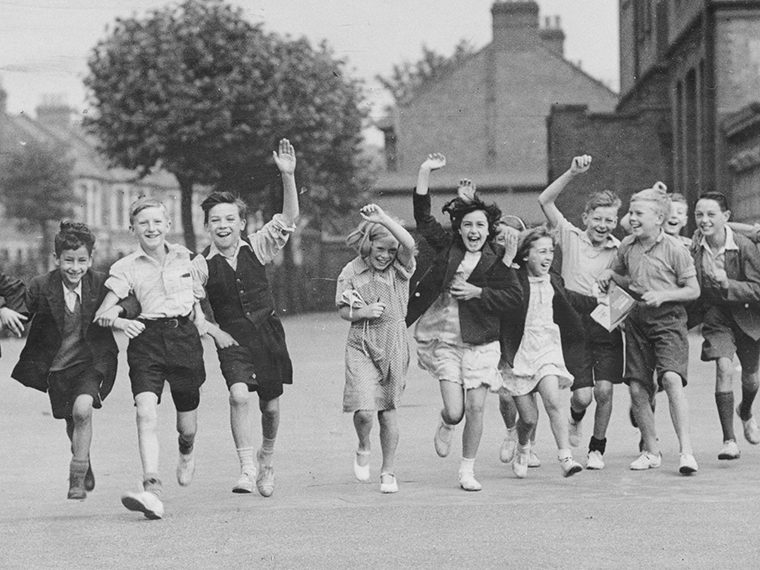Digital identity used in nearly every realm of life
About a billion people globally have a hard time proving they are who they say they are. Without officially recognized identity documents, they often can’t open a bank or cellphone account, travel abroad, vote or sign up for government services. Another 3 billion, the World Economic Forum says, lack a form of identification that would allow them to take part in the digital economy.
In one of the most ambitious efforts to tackle this problem, India in 2009 introduced Aadhaar, a digital identity system for the country’s nearly 1.4 billion people. Aadhaar, which means “foundation” in Hindi, would provide a single, secure ID number that could be used to access all sorts of government and business services. Paul Romer, a former chief economist of the World Bank and Nobel Prize winner, has called Aadhaar, “the most sophisticated ID program in the world.”
Opt In to the Review Monthly Email Update.
Before 2010, when Aadhaar signed its first participant, India lacked a centralized government ID system (like Social Security numbers in the U.S.). More than a third of the population lacked a birth certificate, and 60% didn’t have bank accounts. Only about half of the poor had ration cards, and it’s estimated that half of the cards circulating were fake.
Does Biometric Data ID Mean More Economic Mobility for Citizens?
The Aadhaar program assigns each Indian a unique 12-digit number linked to an individual’s biometric data — all 10 fingerprints and an iris scan. Supporters say that the system has improved the delivery of public services and brought millions of poor citizens into formal labor and financial markets, while saving the government billions once lost to fraud.
Critics, however, say the program still leaves behind the most marginalized parts of the population and poses an unprecedented threat to privacy.
In a study published in the Palgrave Handbook of Technological Finance, UCLA Anderson’s Bhagwan Chowdhry, the Swiss Finance Institute’s Amit Goyal and the Indian School of Business’s Syed Anas Ahmed examine India’s 10-year experience with Aadhaar, describing how the program works, the political trade-offs involved and debates over the implementation of the system. Chowdhry is also executive director of the Digital Identity Research Initiative and a professor of finance at the Indian School of Business.
The research finds that Aadhaar has made it possible for many of those once excluded from India’s formal economic system — nearly half the population — to gain access for the first time to financial services such as bank accounts and mobile-phone SIM cards and to government services, including food subsidies, pensions and the national wage-guarantee program for rural laborers. It cites a 2019 survey in which 4 out of 5 beneficiaries say it has improved reliability of the leading government support programs.
The study also identified weaknesses in the program, including technical failures that have resulted in denial of services for millions of ID holders.
“Almost universal usage now is the best indicator of success.” —Chowdhry
Development experts say that formal identity systems are critical for making sure all citizens are treated fairly by their governments. “Identification is a right, an instrument of protection, and a gateway to access services, benefits and opportunities,” according to the World Bank. A “legal identity for all” is one of the United Nations Sustainable Development Goals. What’s more, modern IDs have to be digital in a world that increasingly relies on mobile and online for access to business and government services.
In India, then-Prime Minister Manmohan Singh recruited Nandan Nilekani, founder of the giant Indian IT company Infosys, to develop a national digital ID program. The government created the Unique Identity Authority of India to operate the program.
UIDAI’s first task was solving the immense technical and logistical problems involved in signing up more than a billion people. To ensure that enrollees haven’t already received an Aadhaar number, the system has to compare the new biometric data against all the previously collected records to make sure there isn’t a match — something that becomes more difficult the more people are signed up.
Fingerprint readers and iris scanners also had to be deployed across the country. To speed the process, the government turned to private companies to handle enrollment — a fact that increased privacy concerns. In the first five years, UIDAI enrolled 600 million Indians; more than twice that number participate today.
“This is nothing short of a miracle in a country where a large population is not highly educated, lives in villages and does not even bother to obtain a traditional identity such as a birth certificate,” Chowdhry, Goyal and Ahmed say in the study.
Because physical identity cards could be lost, forged or bought and sold, Aadhaar initially was designed to be card-free. Biometric data would be stored in the cloud, and if someone wanted to open a bank account, get a mobile-phone SIM or receive food subsidies, they would only have to present their Aadhaar number and fingerprints, and their identity would be verified and the transaction approved. (Since then identity cards with a person’s photo, Aadhaar number and address have become standard ID at airports, hotels and banks.)
By many measures, the program has been a success. The 2019 survey of nearly 150,000 households found that 95% of adults use their Aadhaar ID at least once a month and that 90% were somewhat or very satisfied with the program. The program, which had a budget of about $1.5 billion was credited in 2018 by UIDAI with saving more than $12 billion by reducing fraud.
Concerns about Government Surveillance, Privacy Arise
Still, the adoption of a universal, centralized identity program has been controversial, raising widespread concerns about the possibility of government surveillance and the misuse of individuals’ private information.
While the program was supposed to be voluntary, an Aadhaar number quickly became a necessity as some Indian states made it a requirement to receive subsidized rice, cooking gas and school lunches or to buy property. Citizens complained they were asked for an Aadhaar number when sending mail, using websites that arranged marriages or when trying to track lost Amazon packages. The fact that so many services required the number may have contributed to its near-universal adoption, but it also drew fire from privacy advocates and development experts.
Any nationwide identification system faces concerns about security and a threat to privacy. Add in biometric data and that raises the anxiety level — since biometrics unlike a password can’t be changed if hackers get hold of it. If basic identity information is combined with banking transactions, cellphone records, health data and other personal data, it becomes possible to create detailed dossiers about individuals. Even though nearly three-quarters of those surveyed in 2019 appreciated the convenience of using Aadhaar as a universal ID, nearly half of them worried about linking the information to too many services.
“When the telecom company, the bank, your school and the hospital have your Aadhaar number, it’s a small step to linking up your behavior with communications, finance, education, health and everything else,” says K. Sudhir, a professor at Yale’s School of Management.
In response to numerous legal challenges, the Supreme Court of India in 2018 ruled that Aadhaar didn’t violate Indians right to privacy. But the court also said that only the government, not private businesses, could require an Aadhaar number for access to their services. It also called on the Indian Parliament to pass an explicit data protection and privacy law — an effort that continues.
UIDAI also moved to address privacy concerns with a new “virtual” ID that could be used by businesses in place of the actual Aadhaar number. The VID is a changeable, 16-digit number that can be used for authentication while concealing the original Aadhaar number.
“I don’t believe it addresses privacy issues sufficiently. But let us not forget this is Identity 1.0 in a country with more than a billion people. Aadhaar was able to bring privacy issues to the foreground and later refinements will begin to address some of those issues. In particular, decentralized storage with blockchain technology can enhance security issues.” —Chowdhry
High-Tech Solution Can Leave Disadvantaged Behind
Other critics complained that Aadhaar’s dependence on fingerprint and iris readers and reliable high-speed internet access hurt the most disadvantaged and marginalized groups, especially the rural poor. They cite numerous instances of people denied services because of authentication failures: A widow who was unable to receive rations and her pension because she had lost her Aadhaar card; lepers denied access because they lacked all 10 fingers; and deaths from starvation because problems with the system meant people didn’t receive food rations.
The 2019 survey suggests authentication failures may not be as common critics say. Less than 1% of those surveyed were denied welfare services because of Aadhaar-related problems, compared with 3.3% caused by other problems. Only 1% of participants in India’s work-guarantee program for the rural poor didn’t get work because of the problems with Aadhaar, compared with 31% for reasons unrelated to the identity program.
Other countries looking to create a digital ID system can learn from India’s experience. “Those who are trying to replicate the system will be in a better position to incorporate some of the privacy issues as well as incorporate enhanced security features made possible by new cutting-edge technological advances.” —Chowdhry
Featured Faculty
-
Bhagwan Chowdhry
Professor Emeritus of Finance
About the Research
Chowdhry, B., Goyal, A., and Ahmed, S.A. (2021). Digital Identity in India. The Palgrave Handbook of Technological Finance (pp. 837-853). Palgrave Macmillan, Cham. https://doi.org/10.1007/978-3-030-65117-6_30






